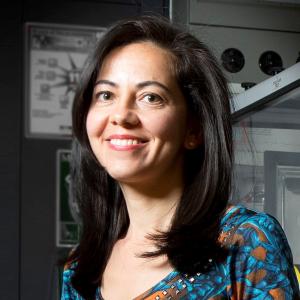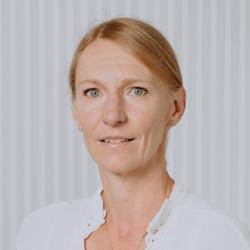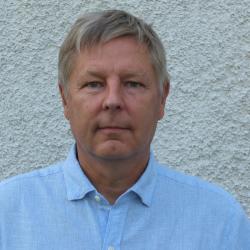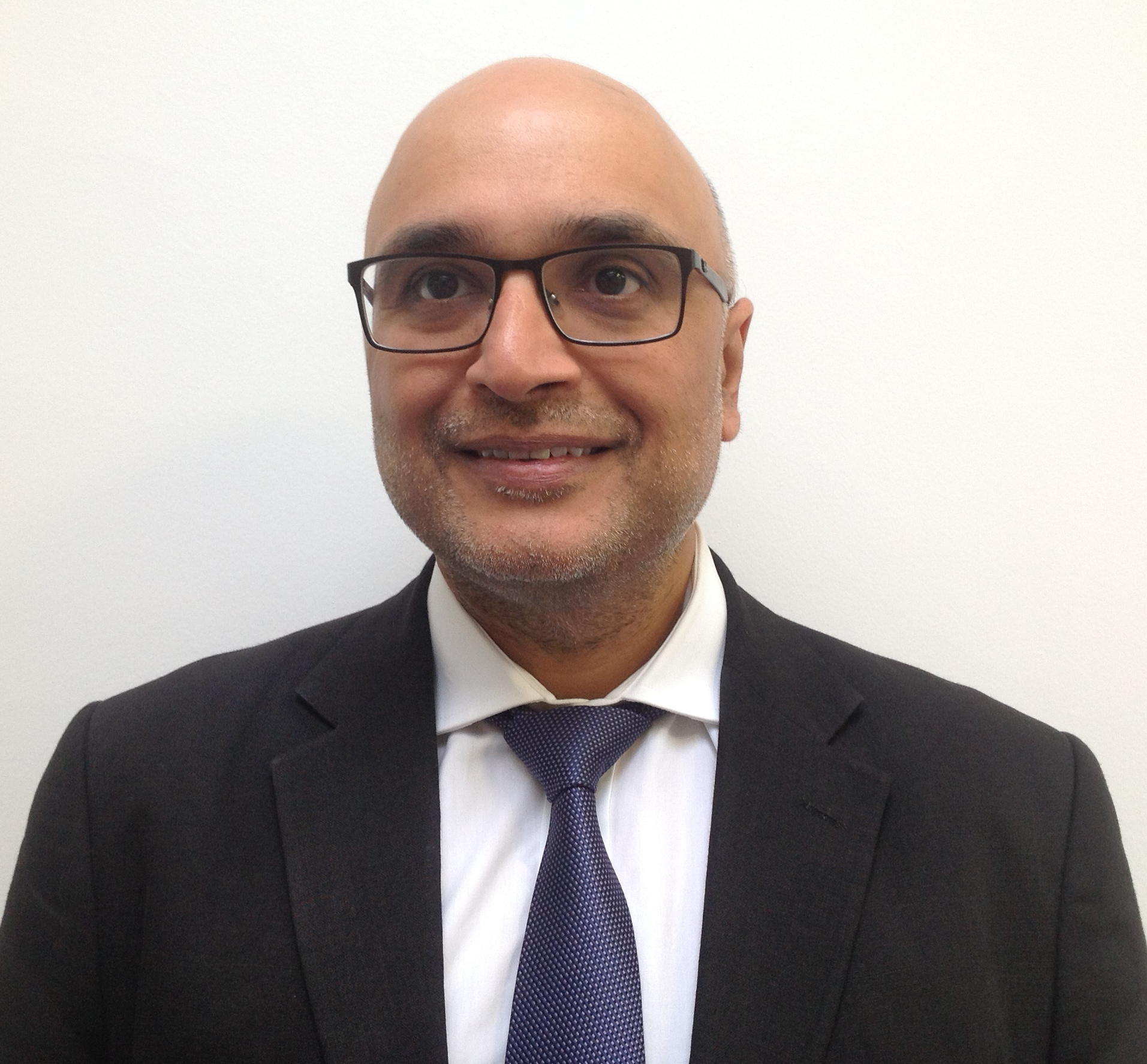Plenaries
Integrated Metasurfaces for Life Science and Biomedical Applications
Emerging healthcare needs, including global healthcare, personalized medicine, and point-of-care applications are demanding breakthrough advancements in diagnostic and bioanalytical tools. Towards this goal, our lab is developing next-generation nanophotonic lab-on-a-chip systems offering high performance in accuracy, response time, integration, throughput, and affordability while reducing complexity, cost and device footprint. We build optical biosensors, spectroscopy, bioimaging and microarray technologies to sensitively detect and analyze biological samples, including disease biomarkers, misfolded protein aggregates, nucleic acids, drugs, and living cells. To achieve our objectives we uniquely combine nanophotonics with advanced nanofabrication, microfluidics, surface chemistry, and data science techniques. In particular, we engineer optical metasurfaces exploiting plasmonics and dielectric resonators to fundamentally increase interaction of light with nanometric sized biomolecules. In this talk, I will present some of our recent works on surface enhanced mid-infrared spectroscopy such as an AI-aided optofluidic biosensor capable of differentiating misfolded disease proteins and high-Q gradient metasurfaces for ultra-broadband operation as well as describe nanophotonic single-cell and organoid microarrays that can enable high-throughput monitoring of extracellular secretion for screening applications.
About the Speaker
Hatice Altug received her Ph.D. in Applied Physics from Stanford University (U.S.) in 2007. She is professor at Ecole Polytechnique since 2013 and leading BioNanoPhotonic Systems Laboratory. Prior to EPFL, she was professor at Boston University from 2007 to 2013. Her research is focused in the application of nanophotonics to life sciences and biomedical fields with the development of biosensing, spectroscopy and bioimaging systems. Prof. Altug is the recipient of numerous awards including European Physical Society Emmy Noether Distinction, Optical Society of America Adolph Lomb Medal, U.S. Presidential Early Career Award for Scientists and Engineers, IEEE Photonics Society Young Investigator Award and Koc University Science Medal. She received European Commission ERC Consolidator and Proof of Concept Grants, U.S. Office of Naval Research Young Investigator Award, U.S. National Science Foundation CAREER Award, Massachusetts Life Science Center New Investigator Award. In 2011, she has been named to Popular Science Magazine's "Brilliant 10" list. She is fellow of Optical Society of America and senior member of SPIE.
Hatice's laboratory web-site: https://www.epfl.ch/labs/bios/
Twitter Handle: @EPFL_altug_lab
Silicon core fibers for nonlinear photonics: Progress and trends
The nascent field of silicon core fibres is attracting increased interest as a means to exploit the excellent optical and optoelectronic functionality of the semiconductor material directly within the fibre geometry. Compared to their planar counterparts, this new class of waveguide retains many advantageous properties of the fibre platforms such as flexibility, cylindrical symmetry, and long waveguide lengths. Furthermore, owing to the robust glass cladding it is also possible to employ standard fibre post-processing procedures to tailor the waveguide dimensions and reduce the optical losses over a broad wavelength range, of particular use for nonlinear applications. This presentation will review progress in the development of nonlinear devices from the silicon core fibre platform and outline exciting future prospects for the field.
About the Speaker
Anna C. Peacock is a Professor of Photonics within the Optoelectronics Research Centre (ORC) at the University of Southampton. She obtained her BSc and MSc in Physics from The University of Auckland (New Zealand), before moving to the ORC to undertake a PhD in Nonlinear Fibre Optics. She was subsequently awarded a Royal Academy of Engineering Research Fellowship, in recognition of her pioneering work on fiberized semiconductor devices. Anna now heads the Nonlinear Semiconductor Photonics group, where the focus of her research is on the design and development of novel semiconductor waveguides. She is a fellow of the Optical Society (FOSA), the IEEE Photonics Society (FIEEE), and the Institute of Physics (FInstP). She is currently serving as a Deputy Director of the ORC, responsible for the Photonics Systems, Circuits and Sensors group.
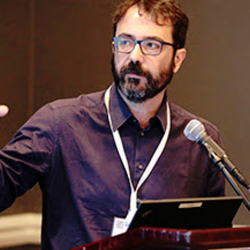
Claudio Conti
Associate professor at the Department of Physics
University Sapienza of Rome, Italy
Photonic spin glasses: from fundamentals to combinatorial optimization and machine learning
Nonlinear and disordered photonic systems exhibit intricate dynamics, encompassing extreme events like rogue waves and non-trivial statistical behaviors. Remarkably, the application of spin-glass theory provides a fitting theoretical framework to elucidate the complexities inherent in these nonlinear optical systems. Experiments involving disordered lasers and nonlinear optical propagation have unveiled direct evidence of Replica Symmetry-Breaking transitions, a pivotal prediction of the spin-glass theory that had eluded confirmation for decades.
While spin-glass theory has found prominence in modern machine learning, combinatorial optimizations, and artificial intelligence, its interdisciplinary connections with photonic systems present a compelling opportunity. We explore the potential to harness these connections to develop innovative non von Neumann devices tailored for large-scale computing.
An introductory review of photonic spin glasses theory and experiments is presented alongside new findings that pave the way toward a new generation of computing devices demonstrating superior scalability compared to existing quantum annealers and Ising machines.
References
1. N. Ghofraniha, et al., Experimental evidence of replica symmetry breaking in random lasers, Nature Communications 6, 6058 (2015)
2. D. Pierangeli, et al., Large-scale photonic Ising machine by spatial light modulation, Phys. Rev. Lett. 122, 213902 (2019)
3. M. Calvanse Strinati, et al., Hyperscaling in the coherent hyperspin machine, Phys. Rev. Lett. 132 (2024)
About the Speaker
Claudio Conti is associate professor at the Department of Physics of the University Sapienza in Rome. He has been Director of the Institute of Complex Systems of the Italian National Research Council. He received the New Talent Grant from the Research Center Enrico Fermi and a Humboldt fellowship at the Max Planck Institute for the Science of Light. He participated in various research projects, including an ERC Grant, “Light and Complexity,” that led to the first observation of replica symmetry breaking, cited in the Nobel Prize in Physics in 2021. CC authored over 250 articles in top-level journals; his research interests encompass complex systems, machine learning, photonics, and nonlinear optics with applications such as Ising machines and fundamental tests of quantum mechanics.
Claudio's website: complexlight.org
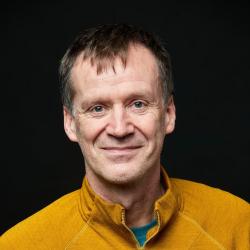
Miles Padgett
Royal Society Research Professor, Kelvin Chair of Natural Philosophy at the University of Glasgow, United Kingdom
Fully flexible micro-endoscopy with a single core fibre the thickness of human hair
Miles Padgett and Simon Mekhail, The University of Glasgow
Endoscopic imaging systems based upon bundles of optical fibres are commonplace across medical and industrial applications. However, even just one of these optical fibres, less that 100µm in diameter, transmits enough spatial modes to relay an entire image, but intermodal dispersion rephases the output modes such that any input image becomes unrecognisable at the output. This problem can be overcome by measuring the transmission matrix of the fibre and using the inverse of the matrix to set the required input light fields to produce a scanning spot over the scene at the output. The backscattered light from this spot can then be measured to create an image of the scene. A current limitation is that the matrix is time consuming to measure and the required input beams time-consuming to calculate. Furthermore, each time the fibre is moved the matrix needs to be remeasured and the input beam recalculated. Here we show that the use of high-speed cameras and GPU computing can reduce this measurement and calculation time to a few 10s seconds, inspiring new modes of operation. When combined with the use of graded index fibres to minimises the sensitivity of the matrix to movement of the fibre, we show that 5-10 rapidly pre-recorded matrices are sufficient to create an imaging system that works over a wide range of fibre positions, giving near continuous imaging from a compact instrument. Such ultra-minimally invasive imaging systems have many uses in inspection and medical applications.
About the Speaker
Miles Padgett is a Royal Society Research Professor and also holds the Kelvin Chair of Natural Philosophy at the University of Glasgow in the UK.
His research team covers all things optical, from the basic ways in which light behaves as it pushes and twists the world around us, to the application of new optical techniques in imaging and sensing. They are currently using the classical and quantum properties of light to explore: the laws of quantum physics in accelerating frames, microscopes that see through noise, shaped light that overcomes diffraction-limited resolution and endoscopes the width of a human hair.
He is a Fellow both of the Royal Society of Edinburgh and the Royal Society (the UK's national academy), in addition to subject specialist societies. He has won various national and international prizes including, in 2019, the Rumford Medal of the Royal Society and in 2021 the Quantum Electronics and Optics Prize of the European Physical Society. Since 2019 he has been identified by Web of Science as a globally highly-cited researcher.
Miles is currently the Principal Investigator of QuantIC, the UK's Centre of excellence for research, development and innovation in quantum enhanced imaging, bringing together eight Universities with more than 40 industry partners.
Fredrik Laurell
Professor of physics at KTH Royal Institute of Technology, Sweden
The Backward Wave Optical Parametric Oscillator
In this talk I will present the backward optical parametric oscillator (BWOPO), a new nonlinear device which have some unique properties. It is a single chip, quasi-phase matched, nanodomain-engineered crystal which, when pumped with an intense laser beam, generates a narrow-linewidth, frequency-stable, contra-directional down-converted beam, and a collinear beam that inherits the spectrum of the pump. Compared to regular optical parametric oscillator the BWOPO provides a very narrow spectrum, easily tunable without mode hops and with a high conversion efficiency. It is among other things excellently suited for differential absorption lidar (DIAL) spectroscopy. I will describe the BWOPO properties in details and how it can be used.
About the Speaker
Fredrik Laurell is a professor of physics at KTH, the Royal Institute of Technology. He is a Fellow of Optica and member of the Royal Swedish Academy of Engineering Sciences. He has been the chairman of the Swedish Optical Society, and the Swedish national committee for optics (ICO). He cofounded PhotonicSweden, the national platform in Photonics, and chaired the Optics section at the Royal Swedish Academy of Sciences and he work on leadership positions at EOS for more six years. He has authored or co-authored more than 300 scientific journal papers and 500 conference papers and he holds 18 patents. He has co-founded 5 companies and received the Göran Gustafsson Prize in Physics.
Laurell’s research spans studies of optical materials, fiber optics, nonlinear optics, and laser physics. He is particularly interested in pushing photonics into real world applications and works extensively with outreach activities.
Kishan Dholakia
Director of the Centre of Light for Life at the University of Adelaide
Professor at the University of St Andrews, Scotland
Viewing life without labels: Advanced biomedical imaging approaches for the preimplantation embryo
In this talk I will describe the use of a range of advanced photonics-based approaches of light sheet microscopy and digital holographic microscopy for label-free imaging. A driver for this work is the understanding of the development of the pre-implantation mammalian embryo [1-4] and improve IVF outcomes.
Embryo quality is a crucial factor affecting live birth outcomes. However, an accurate diagnostic for embryo quality remains elusive in the IVF clinic. Exploiting advanced optical imaging can assess the embryo in 3D and determine its metabolic rate and other physical parameters. This may ultimately prove to be a new multimodal diagnostic approach for embryo health.
Cellular metabolism is a key regulator of energetics, cell growth, regeneration, and homeostasis. The endogenous metabolic cofactors, nicotinamide adenine dinucleotide (phosphate) (NAD(P)H) and flavin adenine dinucleotide (FAD) can be imaged through their autofluorescence. By performing this with hyperspectral imaging at subcellular resolution may assist in determining embryo viability in a clinical setting. Such hyperspectral imaging can be used to determine the ploidy status of the embryo [1]. By using new implementations of light sheet imaging, we can extend this imaging to 3D [2]. Separately, we can tailor digital holographic microscopy (DHM) to measure spatio-temporal changes in refractive index during the development of the embryo that are reflective of its lipid content. Accumulation of intracellular lipid is known to compromise embryo health thus making this a further useful approach for diagnosis [3]. Overall, advanced photonics adds useful, label-free multimodal information for IVF success and can be gentle enough to not effect viability [4].
[1] T. C. Y. Tan et al., Hum. Reprod. 37(1), 14–29 (2021).
[2] Josephine Morizet et al., ACS Photonics 10, 4177-4187 (2023)
[3] George O. Dwapanyin et al., Biomed. Opt. Express 14, 3327-3342 (2023)
[4] C. A. Campugan et al., J. Assist. Reprod. Genet. 39(8), 1825–1837 (2022)
About the Speaker
Kishan Dholakia is an Australian Research Council Laureate Fellow and Director of the newly established Centre of Light for Life at the University of Adelaide. He is also a Professor at the University of St Andrews, Scotland.
His team’s works on a broad range of fundamental and interdisciplinary aspects of photonics, using structured (shaped) light fields. As an example, his group has pioneered the understanding and use of propagation invariant beams in imaging, optical manipulation and cell nanosurgery. Present topics in the group focus on imaging, sensing and manipulation. They include speckle metrology, advanced light sheet imaging including label-free approaches and optical trapping, including rotational levitated optomechanics. His group has been central to addressing key biological problems with such advanced photonics.
He is a Fellow of the Royal Society of Edinburgh, the Optical Society and SPIE. He has won a number of national and international awards including the R.W. Wood Prize of the Optical Society (2016), the IOP Thomas Young Medal and Prize (2017) and SPIE Dennis Gabor Award (2018). His work in light sheet imaging and manipulation has been seen very successful industry translation, with instruments used in over ten countries worldwide.

